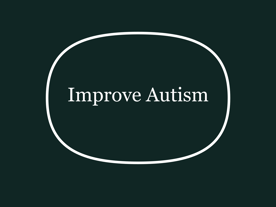Cerebral Folate Deficiency, Folate Receptor Alpha Autoantibodies and Leucovorin (Folinic Acid) Treatment in Autism Spectrum Disorders: A Systematic Review and Meta-Analysis
Authors:
Rossignol, D.A. and Frye, R.E
Key Findings
The study establishes a significant link between CFD (cerebral folate deficiency), FRAA(folate receptor alpha antibodies), and ASD(autism spectrum disorder), with folinic acid emerging as a promising treatment. Here are the primary findings:
Prevalence and Association:
ASD in CFD: 44% of individuals with CFD also have ASD.
CFD in ASD: 38% of individuals with ASD have CFD, indicating a notable overlap.
FRAA in ASD: 71% of individuals with ASD test positive for FRAA, and they are 19.03 times more likely to have FRAA compared to typically developing children without an ASD sibling.
Causes of CFD in ASD: FRAA accounts for 83% of CFD cases in ASD, mitochondrial dysfunction for 43%, and genetic abnormalities for 14%.
Effectiveness of Folinic Acid:
In individuals with ASD and confirmed CFD, folinic acid treatment led to improvements in multiple symptoms (detailed below).
In individuals with idiopathic ASD (without confirmed CFD), folinic acid improved communication and other core ASD symptoms, supported by medium to large effect sizes in controlled studies.
Safety: Folinic acid is generally well-tolerated, with mild adverse effects that do not significantly differ from placebo groups in controlled trials.
How Folinic Acid Helps with Autism
Folinic acid (Leucovorin) is a reduced form of folate that addresses CFD by bypassing the dysfunctional Folate Receptor Alpha (FRα), which is often blocked by FRAA. Normally, FRα transports 5-methyltetrahydrofolate (5-MTHF) into the brain, but when impaired, 5-MTHF levels in the cerebrospinal fluid (CSF) drop, leading to neurological symptoms seen in ASD. Folinic acid enters the brain via the Reduced Folate Carrier (RFC), normalizing 5-MTHF levels and supporting critical processes like neurotransmitter production (e.g., serotonin, dopamine) and methylation metabolism. This mechanism targets an underlying biological issue in ASD rather than merely alleviating symptoms.
Symptoms Improved by Folinic Acid
Folinic acid has been shown to improve a range of symptoms in ASD, depending on whether CFD is confirmed:
In ASD with CFD:
Overall ASD Symptoms: 67% improvement.
Irritability: 58% improvement.
Ataxia: 88% improvement (unsteady movement).
Pyramidal Signs: 76% improvement (e.g., spasticity or weakness).
Movement Disorders: 47% improvement (e.g., dyskinesias).
Epilepsy: 75% improvement.
In General ASD (without confirmed CFD):
Communication: Significant improvements with medium to large effect sizes (e.g., verbal communication, expressive/receptive language).
Core ASD Symptoms:
Stereotypy (repetitive behaviors).
Social withdrawal.
Associated Behaviors:
Attention.
Hyperactivity.
These improvements were observed across various studies, including placebo-controlled trials, highlighting folinic acid’s broad efficacy.
How Long It Takes to Improve
The duration of treatment required for noticeable improvements varies:
General Observation: Improvements are often seen within a few months.
Specific Example: One study reported significant improvements in verbal communication, language, attention, and stereotypy after 4 months of treatment with 2 mg/kg/day (up to 50 mg/day).
Range: Studies varied from 12 weeks to 2 years, with shorter-term studies (e.g., 3-4 months) showing significant benefits, though longer-term effects require further research.
Early intervention appears to enhance outcomes, particularly in younger children.
Dosage of Folinic Acid
Dosages varied across studies, with effective results observed at both high and low levels:
High Dose: 2 mg/kg/day (up to a maximum of 50 mg/day) was commonly used in several studies, showing significant improvements.
Low Dose: 5 mg twice daily (approximately 0.29-0.63 mg/kg/day) was effective in a smaller placebo-controlled study.
Flexibility: Both high and low doses yielded clinical benefits, suggesting that optimal dosing may depend on individual factors, though no standardized protocol has been established.
Pros and Cons of Using Folinic Acid
Pros
Effectiveness:
Improves core ASD symptoms (e.g., communication, social interaction) and associated symptoms (e.g., hyperactivity, irritability), supported by placebo-controlled trials.
Particularly effective in individuals with CFD and FRAA.
Safety:
Well-tolerated with a long history of use since the 1950s.
Mild adverse effects (e.g., aggression, agitation, headache, insomnia, tantrums) were not significantly different from placebo groups.
Biological Targeting:
Addresses an underlying metabolic deficiency (CFD), offering a mechanistic approach rather than symptomatic relief alone.
Cons
Variability in Response:
Not all individuals respond, and higher FRAA titers may correlate with less robust improvements.
Diagnostic Challenges:
Confirming CFD requires a lumbar puncture (invasive), though empirical treatment without CFD confirmation has shown benefits.
Cost and Accessibility:
As a prescription medication, cost and availability may limit access for some families.
Limited Long-Term Data:
While short-term safety and efficacy are established, long-term effects remain understudied.
Summary
Folinic acid (Leucovorin) is a promising, safe, and generally well-tolerated treatment for ASD, particularly when linked to CFD and FRAA. It improves communication, core ASD symptoms, and neurological issues like ataxia and epilepsy, with effects often visible within months. Doses range from 5 mg twice daily to 2 mg/kg/day (up to 50 mg/day), with both proving effective. While it offers significant benefits by targeting a biological mechanism, challenges include response variability, diagnostic hurdles, and the need for more long-term research. This treatment holds substantial potential, especially with early use, but further studies are needed to refine its application.
https://pubmed.ncbi.nlm.nih.gov/34834493/
doi: 10.3390/jpm11111141


